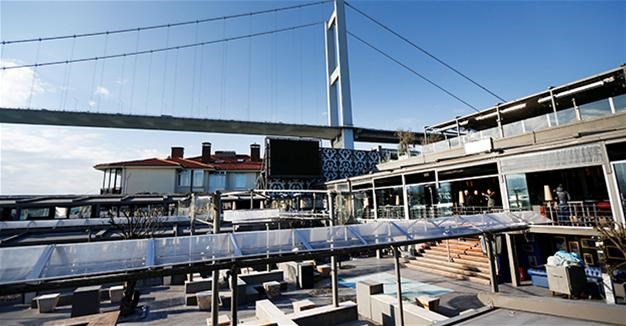
Friday January 20, 2017

REUTERS photo
Islamic State of Iraq and the Levant (ISIL) militants in Raqqa sent footage from inside the Reina nightclub in Istanbul’s Ortaköy to prepare ISIL militant Abdulkadir Masharipov to carry out the attack, according to testimony from the Uzbek militant that was released to the press.
Masharipov, who was caught on Jan. 16 in Istanbul’s Esenyurt district, said in new testimony that he watched the video over and over because he was not familiar with the interior of the posh nightclub on the shore of the Bosphorus.
The footage that was sent from Raqqa has emerged, showing the interior and open sections of the nightclub. The footage also shows the route that Masharipov used during his attack on Jan. 1, in which a total of 39 people were killed and 65 others were
“When it was certain that we would carry out the attack, the emir I contacted in Raqqa sent me footage from inside Reina. I watched the footage over and over again. After completely memorizing the plan of the nightclub, I went to Zeytinburnu and got my weapon, I went back and started the attack,” Masharipov said in his testimony.
While searching for the initial source of the video, police are evaluating whether the footage might have been gathered from social media. Police are also considering the accuracy of the answers given by Masharipov.
The interrogation of the ISIL militant is reportedly being conducted in Russian due to his lack of proficiency in Turkish.
When asked why he chose Reina as a place to attack, Masharipov said those inside were “apostates.” He was also asked why he killed the police officer at the door.
“The police opened fire first. I wouldn’t have been able to enter the nightclub without killing him,” he said.
Masharipov also said he was detained in Iran in 2015 for nearly a month for carrying a fake passport. After that, he illegally entered Turkey in January 2016, he said.
“I was ordered to carry out a suicide attack in Taksim. That’s why I came to Istanbul. The footage I took in Taksim was deemed suitable by Hoca Aka in Raqqa,” Masharipov added, referring to an ISIL figure in Syria.
Masharipov told police that he was unable to meet the person that was supposed to deliver him the explosives for a prospective suicide attack, prompting him to again contact Raqqa. Based on orders from Raqqa, he went to Reina with his weapon and flashbangs, which he thought were hand grenades.
“I arrived at Reina to die. When I saw that the bombs spread light, I ran away,” he said.
Saying that he contacted ISIL militants in Raqqa after the attack, Masharipov said he started waiting after they told him that an ISIL cell in the Central Anatolian province of Konya, which was his initial destination after he arrived in Turkey, would contact him.
Meanwhile, the interrogations of suspects who were detained in connection to the Reina attack have been continuing. A total of 28 ISIL militants were arrested in Istanbul on Jan. 19.
Police are also searching for Masharipov’s 4-year-old son, who could not be found with him during the police operation.
In addition, police have been investigating the background of Masharipov. According to newly released information, the jihadist militant joined al-Qaeda after finishing university but switched his loyalties to ISIL because his views did not match the former group.
During the operation, 27-year-old Senegalese woman Dina A., 26-year-old Egyptian woman Tene Trare, and 27-year-old Somali woman Aysha M., were also apprehended in the same house. It was alleged that they might have been sent to Masharipov by ISIL as “rewards” for carrying out the attack.
After the raid in Esenyurt, Masharipov was taken to hospital after he told the authorities that he was feeling dizzy after appearing to have been struck in the head during his apprehension, according to photos released to the press. Doctors suggested that he should be kept awake for a while in order to understand whether there was a risk of cerebral hemorrhage.